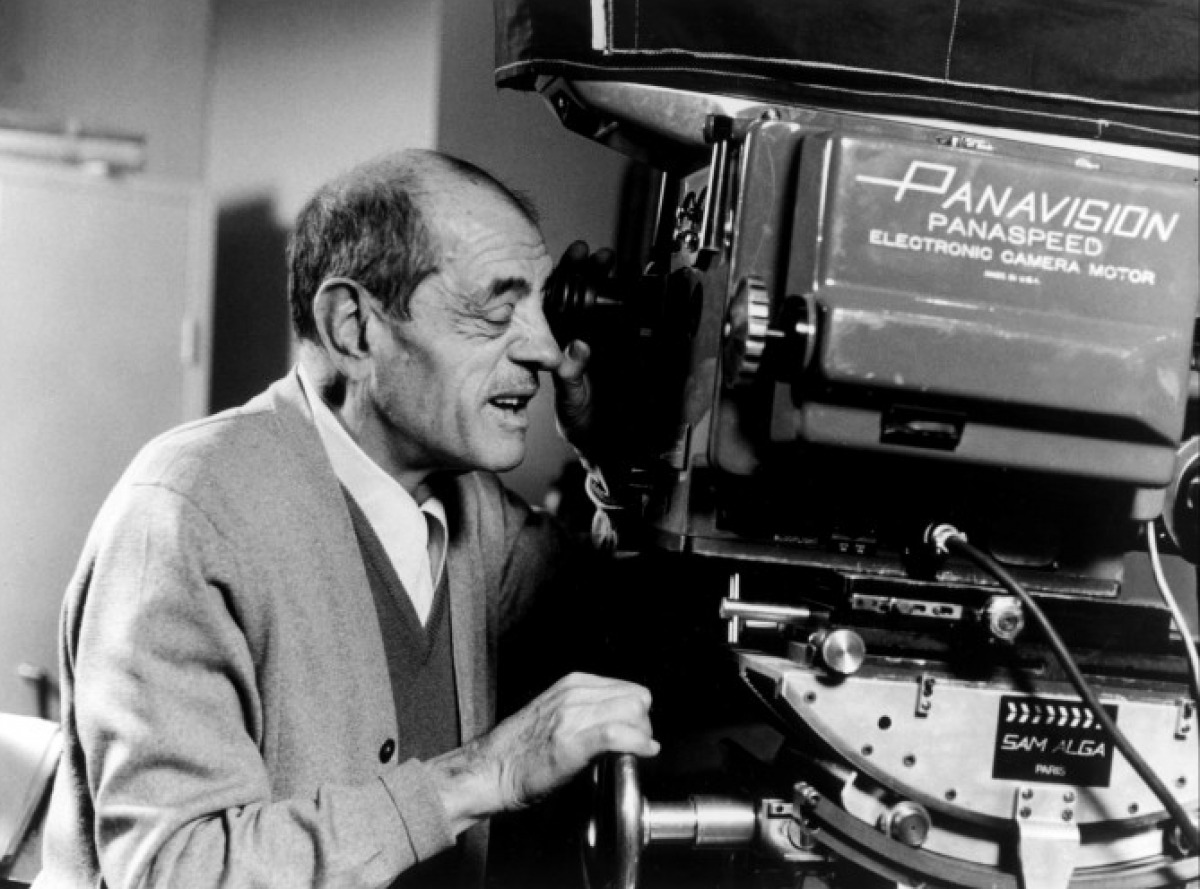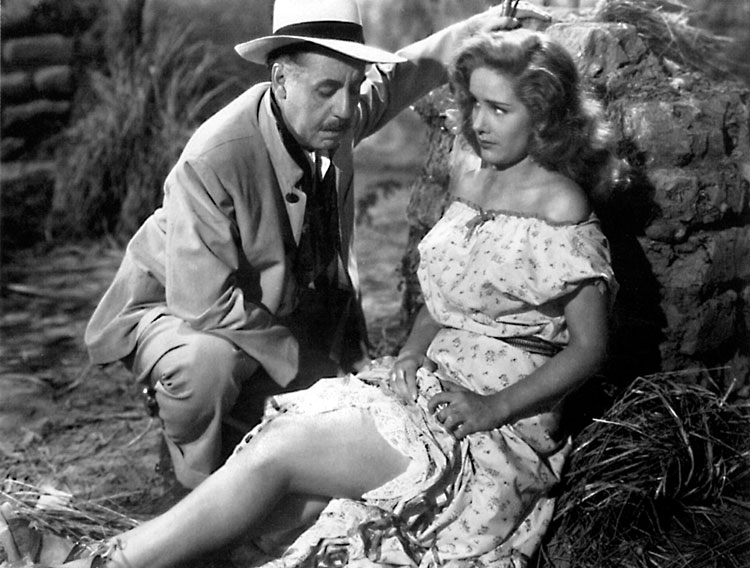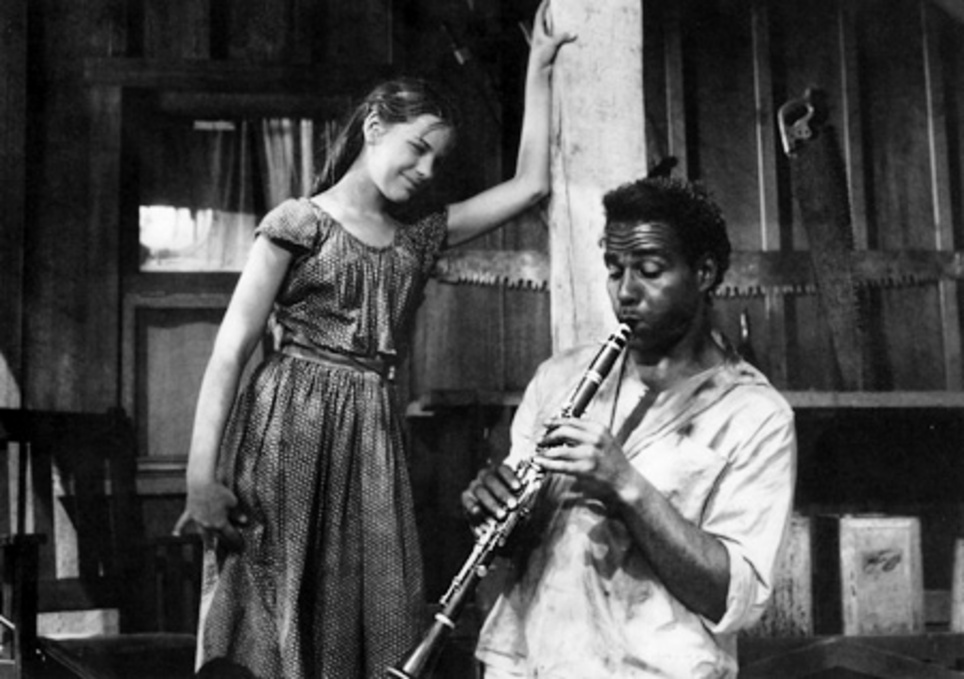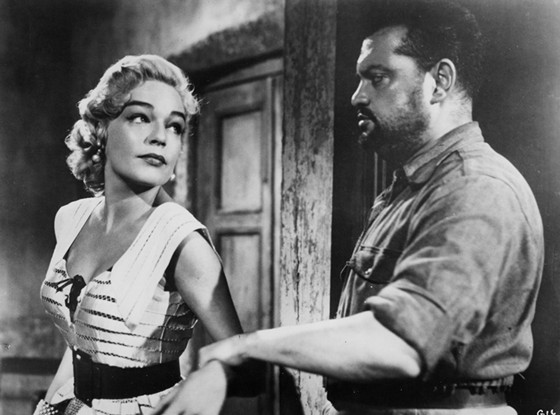Born in Spain and exiled for a majority of his career, Luis Buñuel created a filmography of works that ranged from surreal Parisian shorts to psychosexual Mexican features (and everything in between). His films commonly attacked institutions (religion, society, bourgeois culture) and reconstructed narrative language (often at the expense of spatial/temporal continuity). Buñuel’s direction and style elude finite readings, leading to a cult of devoted followers who try to figure out the meaning of the buzzing box in Belle de Jour.
Buñuel demolishes film language in order to craft characters – ones that are neither completely good nor completely bad – who live in a corrupt world full of hypocrisy. From his first image of a sliced eye to his final image of an exploding film frame, Buñuel left behind a filmography that openly attacks our perceptions and creates pleasure out of displeasure. The twenty films listed here represent the range of Buñuel’s talents.
20. Susana (1951)
Susana (Rosita Quintana) prays to God to help her overcome her unquenchable lust. Miraculously, the window of her reformatory breaks and Susana escapes to a nearby ranch. It isn’t long before Susana is up to her “wicked” ways and becomes the object of affection to the men in the household.
Susana does not have the same bite as Buñuel’s other masterpieces, but it is rife with psychosexual imagery and themes (especially absurd ones like the whipping of Susana). It is lower tier Buñuel, but its conventional storytelling and happy ending provide an intriguing counterpoint to his scathing Mexican masterpieces, such as Los olvidados and The Exterminating Angel.
19. La joven (1960)
A black man named Traver (Bernie Hamilton) escapes the law after he is accused of raping a white girl. He makes his way to an island where he meets a young girl named Evalyn (Key Meersman) and a bee farm owner named Miller (Zachary Scott). Racial and sexual tensions mount between the trio, leading to a brawl between Miller and Traver.
La joven (The Young One) favors a more mainstream sensibility over Buñuel’s signature style. The film plays like a Tennessee Williams screenplay, focusing more on topical issues than surreal imagery. There are provocative images and unbridled sexuality, but the only truly “Buñuelian” element is the use of foot fetishization. This was Buñuel’s last American feature before he returned to Spain to make the infamous Viridiana.
18. La mort en ce jardin (1956)
In an unnamed Latin American country, a group of social misfits (including a hooker and a priest, just to name a few) flee into the jungle in order to escape a political uprising. As they search for salvation, they find new situations that test their ability to survive in the dangerous terrain.
La mort en ce jardin (Death in a Garden) relies heavily on melodrama (a powerful and subversive genre that Buñuel would use in many of his revered works). The first half of the film uses more conventional narrative techniques, but the final half is all Buñuel. From the sexually charged imagery to dubious characters, Death in a Garden adequately showcases Buñuel’s subversive sensibilities within the Mexican film industry.
17. La voie lactée (1969)
Two vagrants – Pierre (Paul Frankeur) and Jean (Laurent Terzieff) – travel on a pilgrimage from Paris to Santiago de Compostela. The two men lose themselves in space and time, encountering prostitutes, stigmatic children, crucified nuns, and a pragmatic Jesus who is looking for a good shave.
La voie lactée (The Milky Way) may not have been one of Buñuel’s more popular films, but it set the groundwork for “The Search for Truth” trilogy, which continues with The Discreet Charm and ends with The Phantom of Liberty. It is grounded in an esperpento style, providing a grotesque distortion of characters and events in order to critique social institutions. Buñuel has also remarked that the Virgin Mary (Edith Scob) is one of the few characters capable of escaping his social/religious criticism due to her purity and serenity.
16. Nazarín (1959)
Padre Nazario (Francisco Rabal) has an obsessive devotion to his faith. When the prostitute Andara (Rita Macedo) begs for shelter after she kills a prostitute, Nazario cleans her wounds and brings her back to health. Andara and Nazario’s neighbor, Beatriz (Marga López), devote themselves to Nazario, believing that he is a miracle worker. The trio leaves their town and they travel from city to city, discovering that their piety doesn’t necessarily sit well with the rest of the world.
Adapted from the novel by Benito Perez Galdos, Buñuel’s Mexican feature examines the idea of religious martyrdom in a corrupt world. Although Buñuel tends to color his characters as being capable of both good and evil, Nazario is one instance (of very few) in which the flaws of the main character elicit sympathy rather than contempt. Devotion and piety are Nazario’s undoing, and unfortunately his followers are selfish people who think primarily of their needs above all others.
15. Le journal d’une femme de chambre (1964)
Céléstine (Jeanne Moreau) becomes a chambermaid in the country estate of the Monteil family. She soon discovers that her indulgence in the sexual frustrations/obsessions of her male employers may help advance her social and financial status.
Le journal d’une femme de chambre (Diary of a Chambermaid) is an integral point in Buñuel’s filmography, not solely because it ushered in Buñuel’s period of French masterpieces, but also because it began his collaboration with screenwriter Jean-Claude Carrière (who would co-write Buñuel’s screenplays from Diary onward). The film also includes foot fetishization, one of the key obsessions that helped Buñuel infiltrate and subvert the upper elite.






